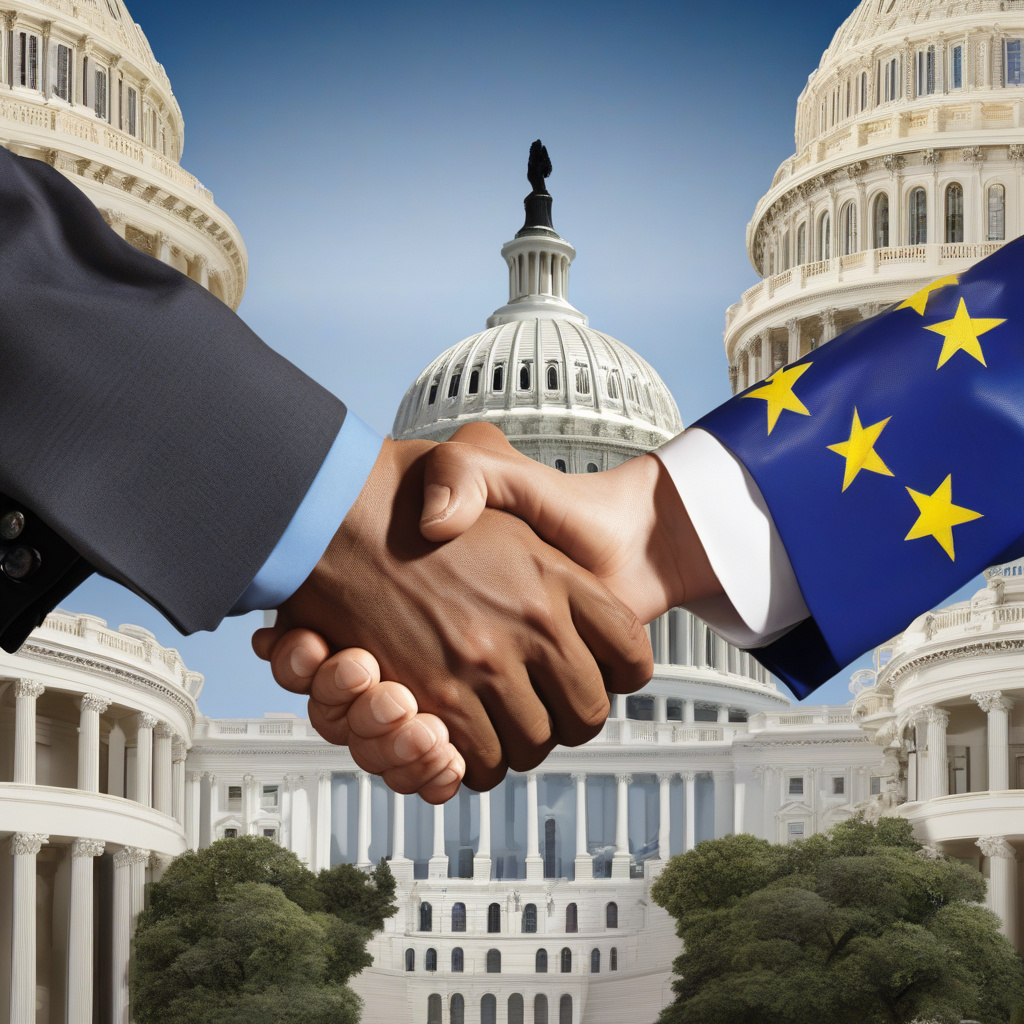US and EU Clinch Deal with 15% US Tariff on Most EU Exports to Avert Trade War
In a significant move to mitigate the risks of escalating trade tensions, the United States and the European Union have reached an agreement that imposes a 15% tariff on a range of European Union exports. This development, scheduled to take effect on August 1, primarily targets major players in the fashion industry, raising concerns and expectations about its implications for both markets.
The decision to implement tariffs is a response to ongoing trade negotiations that have been fraught with friction and uncertainty. The EU’s exports to the US, which include high-end fashion items, textiles, and accessories, will all be subject to the new 15% tariff. This agreement aims to prevent a full-blown trade war that could have detrimental effects on both economies.
The fashion industry is particularly vulnerable to these changes. Renowned European brands, including Gucci, Prada, and Louis Vuitton, could see their prices increase as the tariffs are passed on to consumers. This price hike may lead to a decline in demand for these luxury items in the US market, which has been a significant source of revenue for these brands. For instance, in 2021 alone, US imports of EU fashion products amounted to approximately $38 billion, illustrating the scale of the impact that these tariffs could have.
Moreover, the tariffs could disrupt supply chains, as companies may seek to relocate production or source materials from alternative suppliers outside the EU to avoid the additional costs. This shift could result in longer lead times and increased operational complexities for fashion retailers. Brands may also need to rethink their pricing strategies, potentially leading to a decrease in profit margins as they navigate the new economic landscape.
The agreement is not only a response to trade imbalances but also reflects broader geopolitical considerations. The US has been advocating for fair trade practices and aimed to hold its trading partners accountable. By striking a deal that imposes tariffs, the US government hopes to protect domestic industries while also signaling to European nations that it is serious about addressing trade deficits.
However, this move has sparked mixed reactions across the business community. Some industry leaders argue that the tariffs could jeopardize jobs within the fashion sector. For example, retail giants that rely heavily on European imports may face challenges in maintaining their workforce if they experience a downturn in sales due to increased prices. Conversely, proponents of the deal argue that the tariffs could lead to more competition within the US market, encouraging domestic production and innovation.
The ramifications of the new tariff structure extend beyond fashion, affecting a range of sectors within the economy. The decision to implement these tariffs has the potential to create ripple effects across various industries, including manufacturing and logistics. For example, companies that specialize in shipping and distribution may experience increased demand as businesses seek to navigate the complexities of sourcing from different regions.
As the implementation date approaches, businesses must prepare for the changes that will come with the tariffs. This includes assessing their supply chains, recalibrating pricing strategies, and exploring alternative sourcing options. Retailers may also need to enhance communication with consumers regarding potential price increases and the reasons behind them.
In conclusion, the recent agreement between the US and EU to impose a 15% tariff on most EU exports marks a pivotal moment in international trade relations. While it aims to prevent a trade war, the implications for the fashion industry and beyond cannot be underestimated. The potential impact on pricing, supply chains, and employment levels raises important questions for businesses and consumers alike. As the tariffs take effect, stakeholders across the spectrum will need to adapt to this new reality, ensuring they remain competitive in an increasingly challenging environment.
fashion, trade, tariff, EU, US
